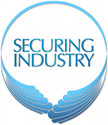RFID for Healthcare and Pharmaceuticals 2009-2019
 Authors: Dr Peter Harrop & Trevor Crotch-Harvey
Authors: Dr Peter Harrop & Trevor Crotch-Harvey
Publication date: July 2009
Number of pages: 290
Pricing:
- Electronic copy (includes five user licence): £1,345
- Printed & electronic copy: £1,445


Download full report details (including table of contents)

Download order form

Report Summary
The RFID business is growing so fast that few applicational sectors can beat that scorching rate of growth. Healthcare and pharmaceuticals is one of them thanks to the new tagging of drugs, real time location of staff and patients and other developments including automated error prevention. This unique report gives a full technical and market analysis illustrated by 70 case studies. It is a vital resource for the healthcare profession and all who wish to support it. We separately assess the opportunity for both passive and active tags in pharmaceuticals and healthcare in the following sectors:
- Pharmaceutical drugs
- Medical disposables and other items
- Pallets and cases
- Laundry
- People
- Secure Access
- Conveyances, vehicles, assets
- Real Time Locating Systems (RTLS)
- Sensor based applications
RFID in healthcare and pharmaceuticals has special requirements, unquantifiable benefits (safety, security, reputation, brand protection etc) and sometimes tolerance of longer paybacks for such reasons can often lead to very profitable and worthwhile business for suppliers. Extensive benchmarking in the business leads to rapid dissemination of the multiple benefits to users of given schemes and great pressure on the laggards to catch up.
Rapid increase in adoption
The market for RFID tags and systems in healthcare will rise rapidly from $94.6 million in 2009 to $1.43 billion in 2019. Primarily, this will be because of item level tagging of drugs and Real Time Locating Systems (RTLS) for staff, patients and assets to improve efficiency, safety and availability and to reduce losses. The tagging of the packs of blisterpacks and the plastic bottles used by patients is primarily a US phenomenon driven by the need for improved anticounterfeiting but there will be great improvements in theft deterrence and improved stock control and recalls.This report analyses 10 year forecasts of RFID in the healthcare and pharmaceutical sector.

Enquiry Form
For more information, or to order this report, please complete the form below:
Home | About us | Contact us | Advertise | Links | Partners | Privacy Policy | | RSS feed  | back to top
| back to top
© SecuringIndustry.com



